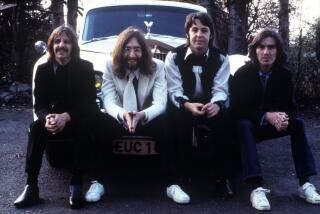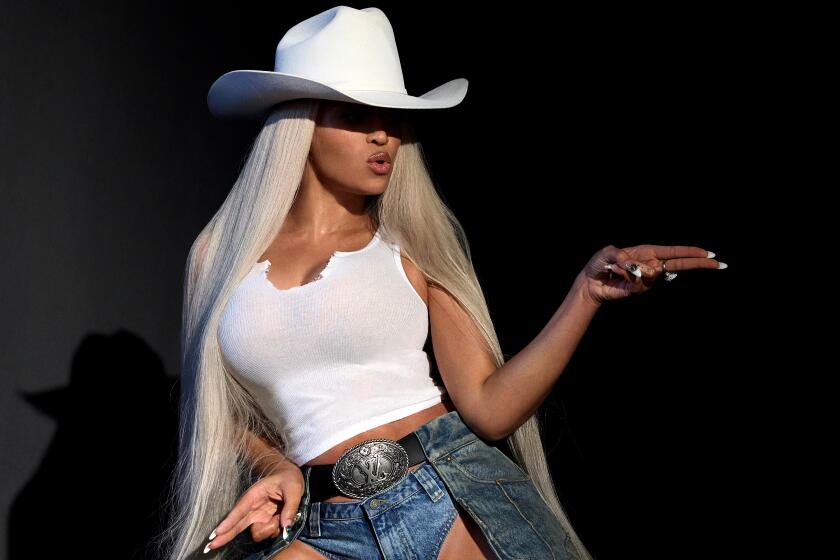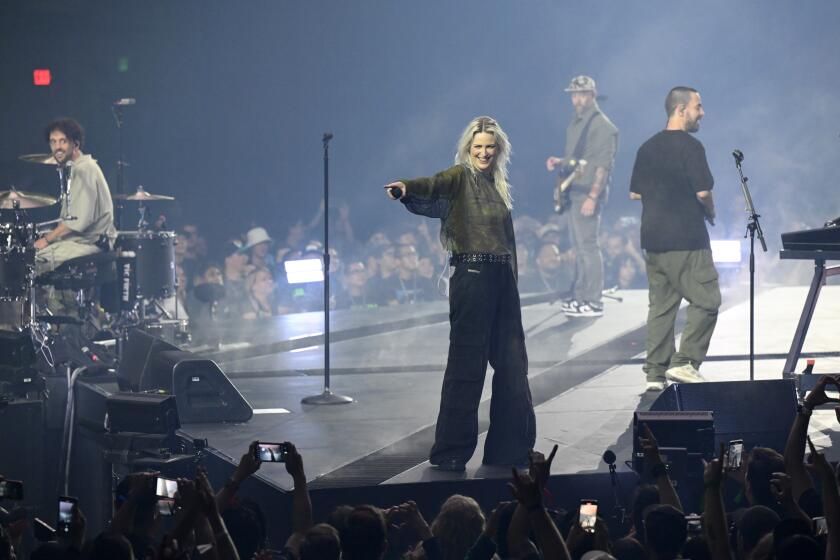Paul McCartney and Ringo Starr recall simpler times in ‘Eight Days a Week’
- Share via
For Paul McCartney and Ringo Starr, the process of working with director Ron Howard on his new documentary “The Beatles: Eight Days a Week — The Touring Years,” which opened nationally today, put them back in touch with aspects of their early career, some of which were culturally momentous, some delightfully modest.
In a recent Times piece that spoke with the film’s three principal collaborators, McCartney noted that Beatles’ contracts for performing during its visits to the U.S. stipulated that the Fab Four would not play for segregated audiences, something that was a fact of life in many states in the mid-1960s at the height of Beatlemania.
At the same time, in the midst of the conversation about some of the big differences in playing rock music a half century ago versus today, Starr interrupted the discussion and turned to his lifelong friend and bandmate to pose a question.
See the most-read stories in Entertainment this hour »
“Paul, how many basses did you use on stage in those years?” Starr said.
“Basses?” McCartney responded, genuinely curious. “One.”
“And how many guitars did John [Lennon] use on stage?” Starr continued.
McCartney replied, “One — maybe he’d pick up an acoustic as well.”
“Right,” answered Starr. “I get crazy with all these bands now: They’ve got a guitar for every song. That’s another lesson of this film. Like I should change my [drum] kit for every song? I’d go crazy!”
Added McCartney, “That’s how it is now. You’ll laugh, but when we first started out, we had two guitars and the bass in one amp. Wow — give it up!”

The trailer for Ron Howard’s documentary, “The Beatles: Eight Days a Week - The Touring Years.”
As noted in one of the film’s many smile-inducing moments, the Beatles also became the first rock group to perform in massive sports stadiums. The performances at Shea Stadium in New York drew the largest audiences for pop music events at the time. (A 30-minute film of the Beatles performing at Shea Stadium will accompany the theatrical screenings of “Eight Days a Week.”)
Yet there were no high-end sound systems like those standard at concerts today to carry the music to all corners of such venues, and vocals often ended up being piped through the same primitive public address systems that stadium announcers used to inform baseball fans about who was pinch-hitting for whom.
And George Harrison notes in archival footage that the company that made their amplifiers tried to ratchet things up for the great outdoors. “Vox made these custom amps for us,” he says with a laugh. “I think they were maybe 100 watts,” a size many rock bands use when they play clubs today.
That was one of many obstacles to performance that faced McCartney, Starr, Lennon and Harrison as their fame exploded, and which in 1966 led the quartet to retire from touring and focus on the environment where more artistic control was still possible: the recording studio.
Follow @RandyLewis2 on Twitter.com
For Classic Rock coverage, join us on Facebook
ALSO
Beatles family reunites at revamped 10th anniversary of ‘Love’ show in Las Vegas
‘Eight Days a Week’ unearths new Beatles’ footage, including their final show
More to Read
The biggest entertainment stories
Get our big stories about Hollywood, film, television, music, arts, culture and more right in your inbox as soon as they publish.
You may occasionally receive promotional content from the Los Angeles Times.








